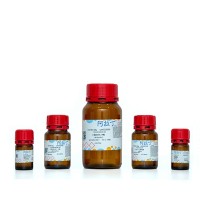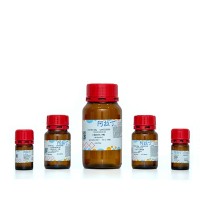The concentration of protein in a sample prepared for two dimensional (2-D) electrophoretic analysis is usually determined by protein assay. Reasons for this include the following. (1) Protein quantitation ensures that the amount of protein to be separated is appropriate for the gel size and visualization method. (2) Protein quantitation facilitates comparison among similar samples, as image-based analysis is simplified when equivalent quantities of proteins have been loaded on the gels to be compared. (3) Quantitation is necessary in cases where the protein sample is labeled with dye before separation (1 ,2 ). The labeling chemistry is affected by the dye to protein ratio so it is essential to know the protein concentration before setting up the labeling reaction.
A primary consideration with quantitating protein in samples prepared for 2-D electrophoresis is interference by nonprotein substances that may be present in the sample. These samples generally contain chaotropic solubilizing agents, detergents, reductants, buffers or carrier ampholytes, all of which potentially interfere with protein quantitation.
The most commonly used protein assays in proteomics research are colorimetric assays in which the presence of protein causes a color change that can be measured spectrophotometrically (
3 ). All protein assays utilize standards, a dilution series of a known concentration of a known protein, to create a standard curve. Two methods will be considered that circumvent some of the problems associated with interfering substances and are well suited for samples prepared for 2-D electrophoresis. The first method (4.1.1) relies on a color change that occurs upon binding of a dye to protein and the second (4.1.2) relies on binding and reduction of cupric ion (Cu

) ion to cuprous ion (Cu

) by proteins.
 ) ion to cuprous ion (Cu
) ion to cuprous ion (Cu  ) by proteins.
) by proteins. ) ion to cuprous ion (Cu
) ion to cuprous ion (Cu  ) by proteins.
) by proteins.![N-(3-Chlorophenyl)-N'-[5-[2-(thieno[3,2-d]pyrimidin-4-ylamino)ethyl]-2-thiazolyl]urea](https://img1.dxycdn.com/p/s14/2025/1010/765/0865776312945446791.jpg!wh200)



![N-[3-(4-methylpiperazine-1-carbonyl)-2-propan-2-yloxyphenyl]-4-oxo-1H-thieno[3,2-d]pyrimidine-7-carboxamide,Moligand™,阿拉丁](https://img1.dxycdn.com/p/s14/2024/0619/785/8670042233826733081.jpg!wh200)

